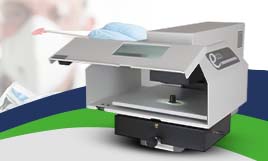LASER-INDUCED BREAKDOWN SPECTROSCOPY (LIBS)
Laser-induced Breakdown Spectroscopy (LIBS) is a technology for rapid analysis of chemical which uses a short laser pulse for creating a micro-plasma on the surface of the sample. This exceptional analytical technique can offer several compelling advantages when compared with other techniques of elemental analysis. So what are they?
• An experience which is free of sample-preparation
• Very fast measurement time which is mainly just a few seconds for analysis of a single spot
• Broad coverage of elements, including lighter elements like Be, H, Li, N, C, O, Mg, and Na
• Versatile sampling protocols which include fast raster of the sample surface along with depth profiling
• Analysis of thin-sample without needing to worry about the interference of the substrate
The conventional detection limit for LIBS for the high metallic element is in the low-PPM range. To a wide range of sample matrices, LIBS is not applicable which includes semiconductors, metals, biological tissues, glasses, plastics, insulators, plants, soils, thin-paint coating, and other electronic materials.
Working principle of LIBS –
The primary physical process which forms the LIBS technology’s essence is the formation of high-temperature plasma which is induced with the help of a short laser pulse. When the focus of the short-pulse laser beam is on the surface of the sample, then a small amount of the mass is ablated by the process of Laser Ablation. With the trailing portion of the pulse of the laser, the ablated mass interacts for forming highly energetic plasma that comprises excited atoms, free electrons, and ions.
BCL offers LIBS analyzers for the quick classification of pure fractions for the industrial recycling of scrap metals.



-Main-(741-x-200)1.jpg)




